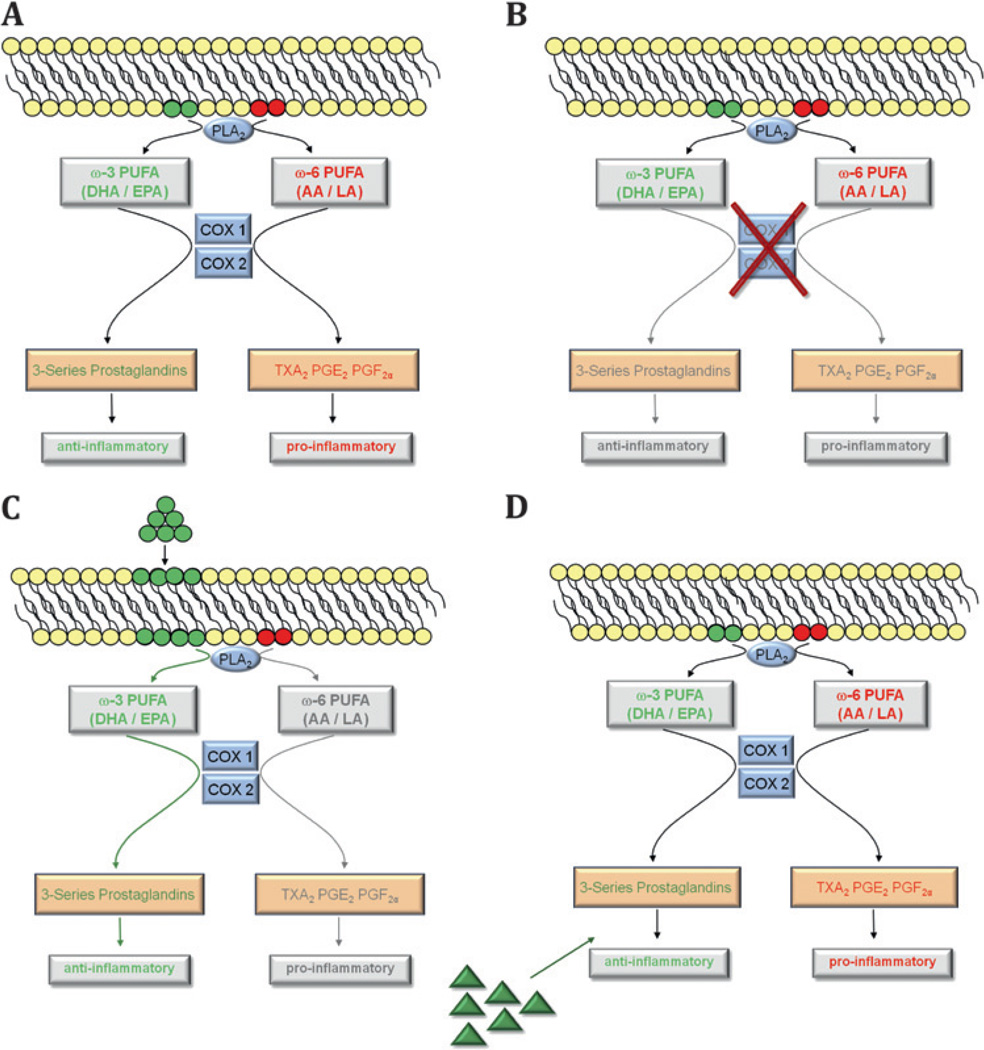Figure 5.
The cyclooxygenase pathways used as examples for different lipid-based treatment approaches. (A) With both ω3- and ω6-polyunsaturated fatty acids (PUFAs) available, the enzymatic cascade of phospholipase A2 (PLA2) and cyclooxygenase (COX)-1 and -2 create anti-inflammatory 3-series prostaglandins and inflammatory 2-series prostaglandins (thromboxane A2 (TXA2), prostaglandin (PG) E2 and PGF2α). (B) Pharmacological inhibition of COX enzymes with COX-inhibitors limits both the generation of ω3- and ω6-derived metabolites thus reducing the pool of both inflammatory and anti-inflammatory mediators in the retina. (C) In contrast, increasing the amount of available ω3-PUFA substrates for enzymatic processing yields more anti-inflammatory ω3-derived mediators and less inflammatory ω6-metabolites. (D) A different treatment approach would be to directly administer lipid metabolites that have been identified as having beneficial effects during retinopathy. Similar rationales apply to other lipid-metabolising pathways (lipoxygenase (LOX) or cytochrome P450 (Cyp450)) where the pool of lipid metabolites can be shifted towards a more beneficial profile. AA, arachidonic acid; DHA, docosahexaenoic acid; EPA, eicosapentaenoic acid; LA, linoleic acid.

